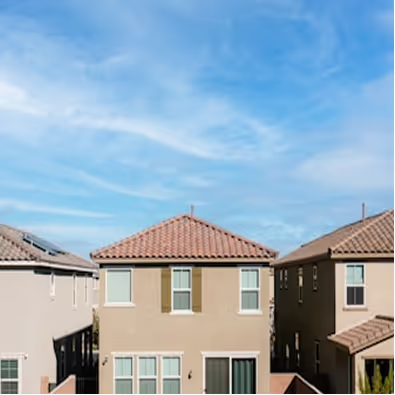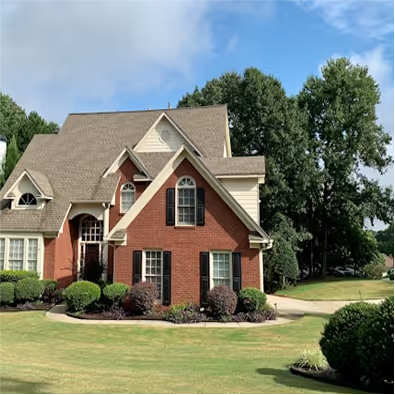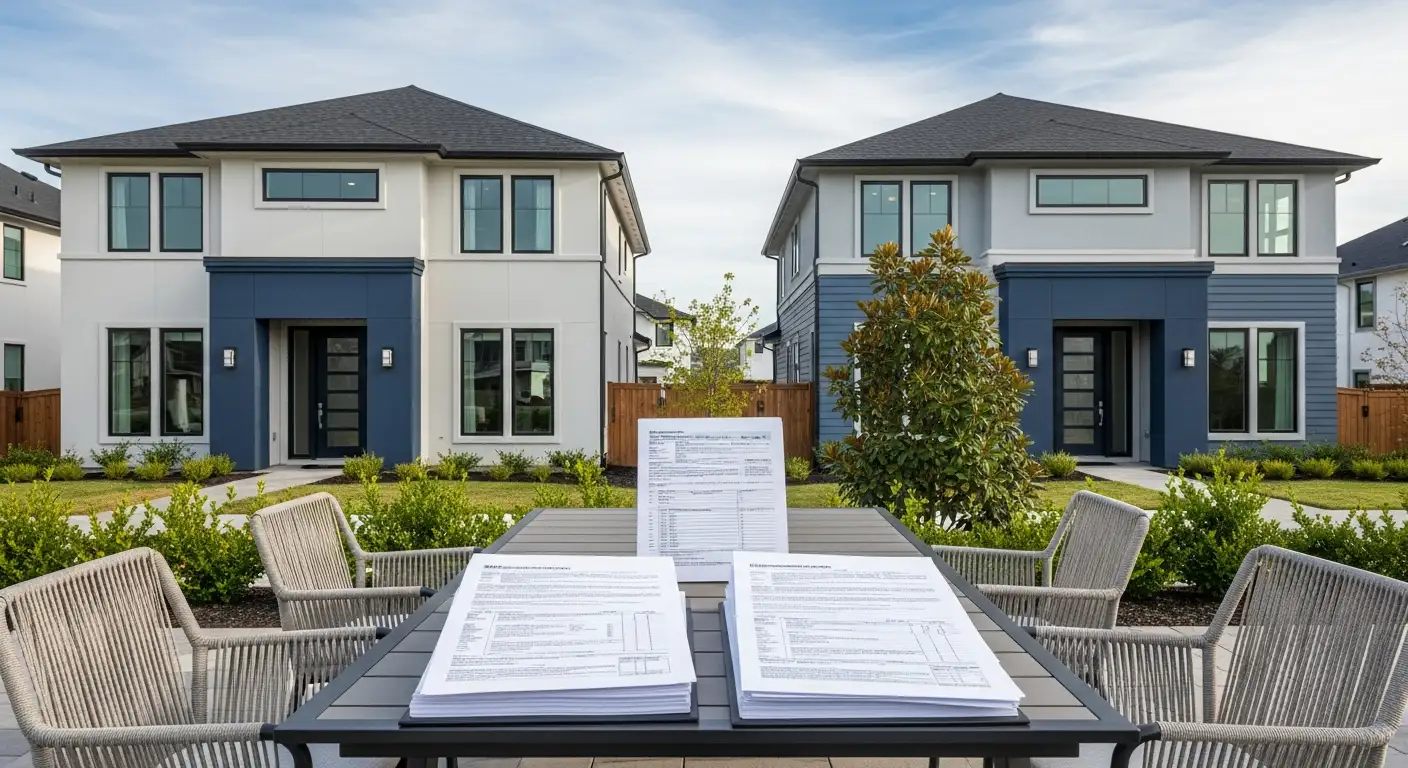Introduction to Closing Costs in Mortgage Deals
Closing costs are an essential aspect of purchasing or refinancing a home, often representing a substantial additional expense beyond the down payment. These costs cover a variety of fees and services required to complete the mortgage transaction. This article explores the components, typical amounts, payment responsibilities, and strategies to manage and potentially reduce closing costs, helping buyers approach home financing with more clarity and confidence.
What Are Closing Costs and Why Do They Matter?
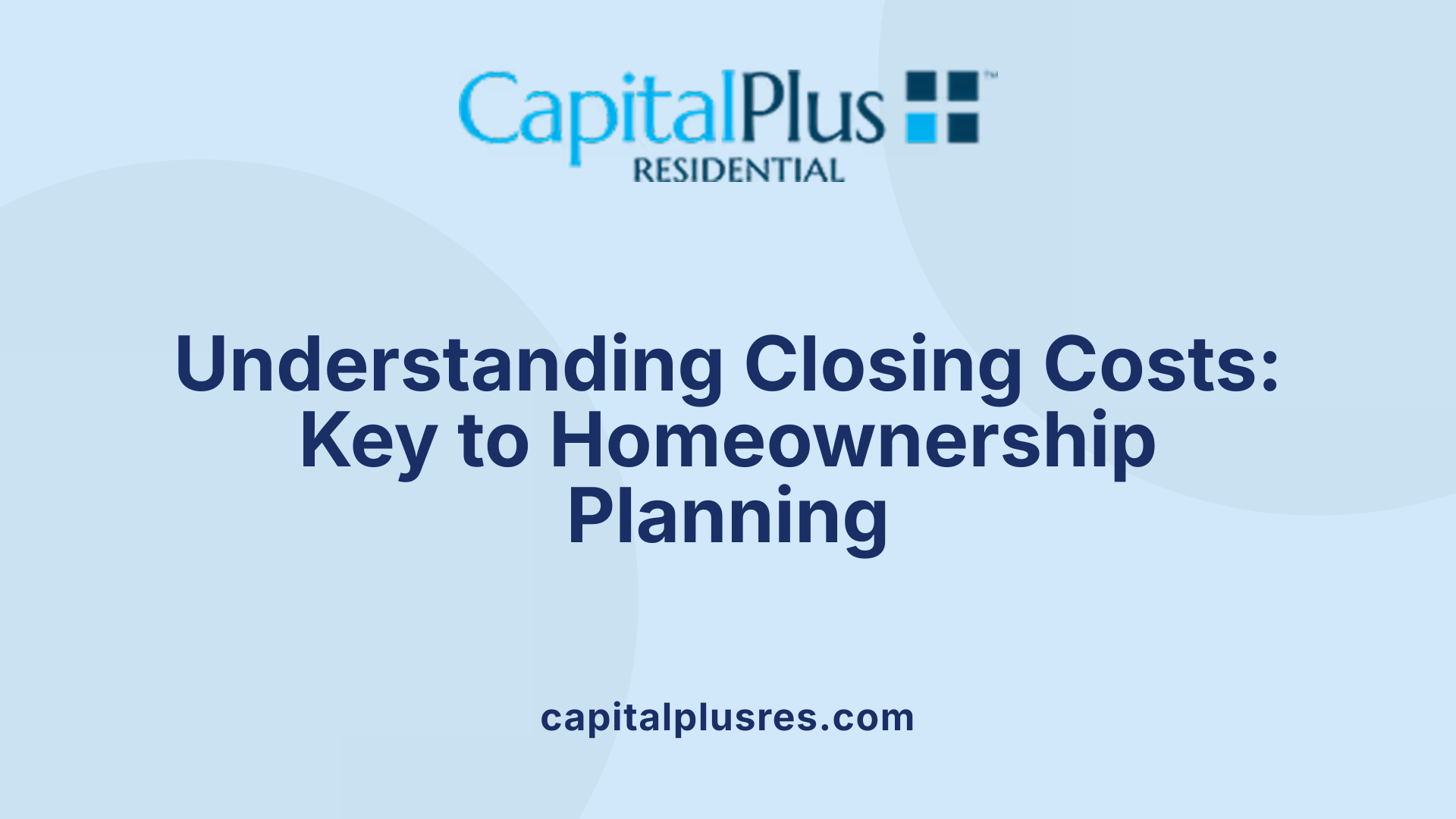
What are closing costs in a mortgage transaction?
Closing costs are supplemental expenses paid during the finalization of a home purchase or refinance, beyond the down payment. These fees include charges for necessary services such as appraisal, attorney fees, title insurance, credit checks, recording fees, and other administrative costs involved in completing a real estate transaction.
How much do closing costs usually amount to?
Typically, closing costs range between 2% and 6% of the total loan amount. For example, if you have a $300,000 mortgage, closing costs might be between $6,000 and $18,000 depending on your loan size, the property's price, and its location.
Why do closing costs matter?
Closing costs cover essential services that protect both the buyer and lender during the real estate transaction. They ensure thorough property evaluation, legal compliance, clear property titles, and proper loan processing. Understanding closing costs is crucial because they add a significant amount to the upfront expenses of buying or refinancing a home, influencing overall affordability and financial planning.
Key Components of Closing Costs: Breaking Down the Fees
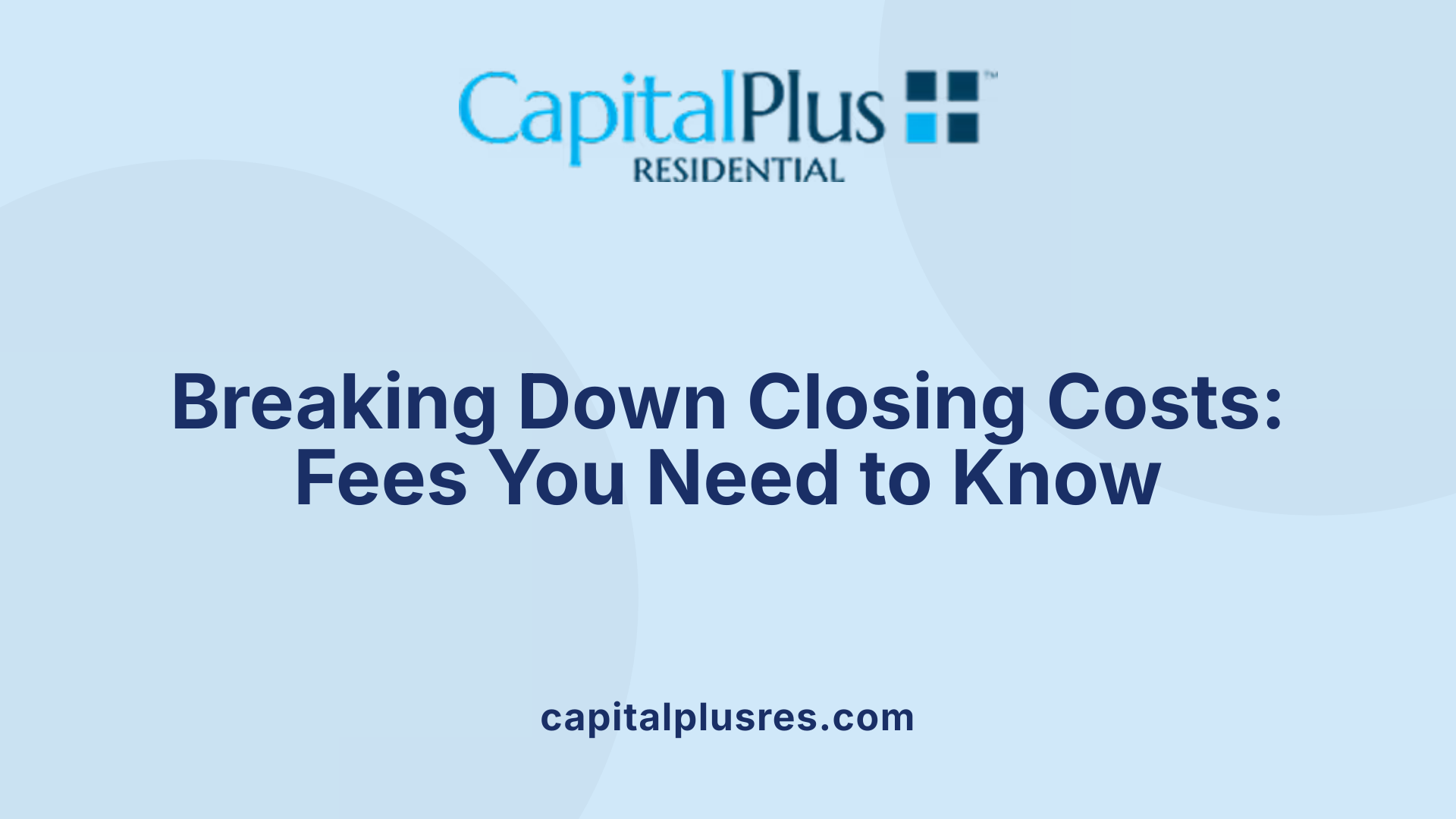
What are the main components included in closing costs?
Closing costs generally comprise three primary categories: lender fees, third-party fees, and prepaid expenses. These fees collectively cover services and charges necessary to finalize a home mortgage transaction.
Lender Fees
Lender fees are charges imposed by the mortgage lender for processing and underwriting the loan. Typical lender fees include:
- Application Fee: Covers the initial processing of the mortgage application.
- Origination Fee: Charged for underwriting and funding the mortgage.
- Underwriting Fee: Pays for evaluating the loan risk.
- Processing Fee: Covers administrative tasks during loan approval.
Third-Party Fees
These fees pay for services provided by external entities necessary to secure the loan and property title:
- Appraisal Fee: Pays for a certified valuation of the property.
- Title Insurance: Protects against title disputes or defects.
- Credit Report Fee: Covers the cost of retrieving the applicant’s credit history.
- Survey Fee: (If required) Assesses property boundaries.
- Title Search Fees: For a detailed examination of the property’s ownership history.
Prepaid Expenses
Prepaid expenses are upfront payments required at closing to cover costs that will arise soon after closing:
- Prepaid Interest: Covers interest between closing date and the first mortgage payment.
- Property Taxes: Often prepaid for several months in advance.
- Homeowners Insurance: Typically paid for the first year upfront.
Understanding these categories helps borrowers anticipate, compare, and negotiate closing costs according to their mortgage type and location. Details in each category can vary widely depending on state, lender, and transaction specifics.
Who Pays What? Understanding Buyer and Seller Closing Costs
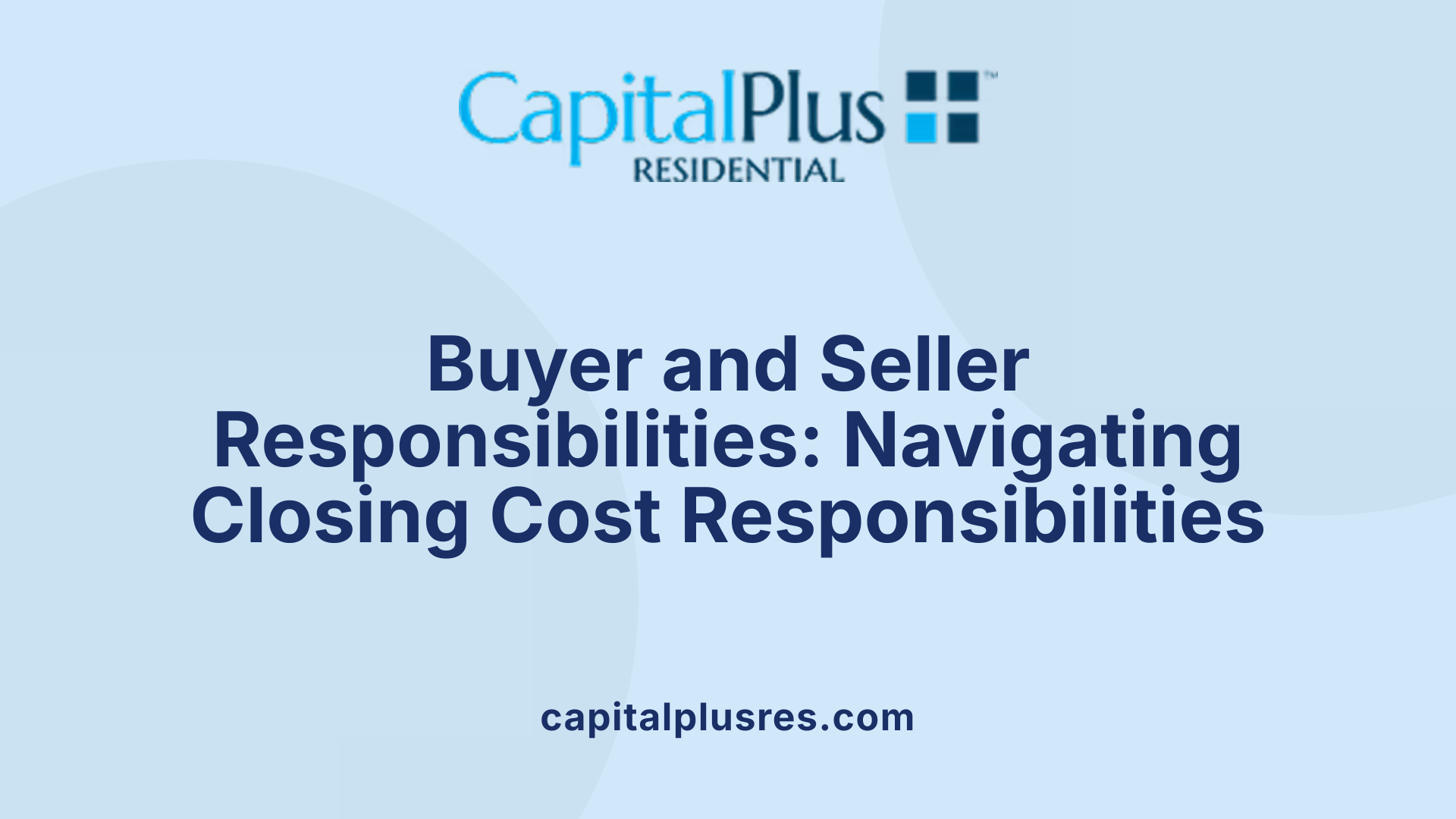
Who usually pays closing costs in a mortgage transaction?
Buyers generally shoulder most of the mortgage closing costs. These include essentials such as appraisal fees, credit check fees, title search and insurance fees, attorney fees, and loan origination fees. These costs typically relate to securing the mortgage and validating the property’s condition and ownership.
Buyer vs. seller responsibilities
While buyers pay the bulk of closing costs, sellers are typically responsible for costs linked directly to the sale process. This usually includes transfer taxes, real estate agent commissions (which can be a significant percentage of the sale price), and some agency or administrative fees. The seller’s costs often amount to 6-10% of the home’s sale price, whereas buyers usually pay about 2-5% of the loan amount in closing fees.
Typical buyer-paid fees
Buyers can expect to pay the following fees:
- Application fees
- Appraisal fees
- Credit report fees
- Loan origination fees
- Attorney and settlement fees
- Title insurance and search fees
- Recording fees
- Prepaid items such as homeowner’s insurance and property taxes
Possible seller-paid costs
Typical seller-paid costs include:
- Real estate agent commissions
- Transfer taxes
- Some attorney fees related to the sale
Negotiation of seller concessions
Buyers have the option to negotiate seller concessions, where sellers agree to cover part of the buyer’s closing costs. These concessions are often capped by the type of loan but can effectively lower the buyer’s upfront expenses. This negotiation is a key strategy, especially for buyers seeking to reduce their out-of-pocket costs at closing.
Understanding who pays what in closing costs helps buyers and sellers prepare adequately, plan their finances, and navigate the negotiation process more effectively.
Variations in Closing Costs: Location, Property Type, and Loan Category
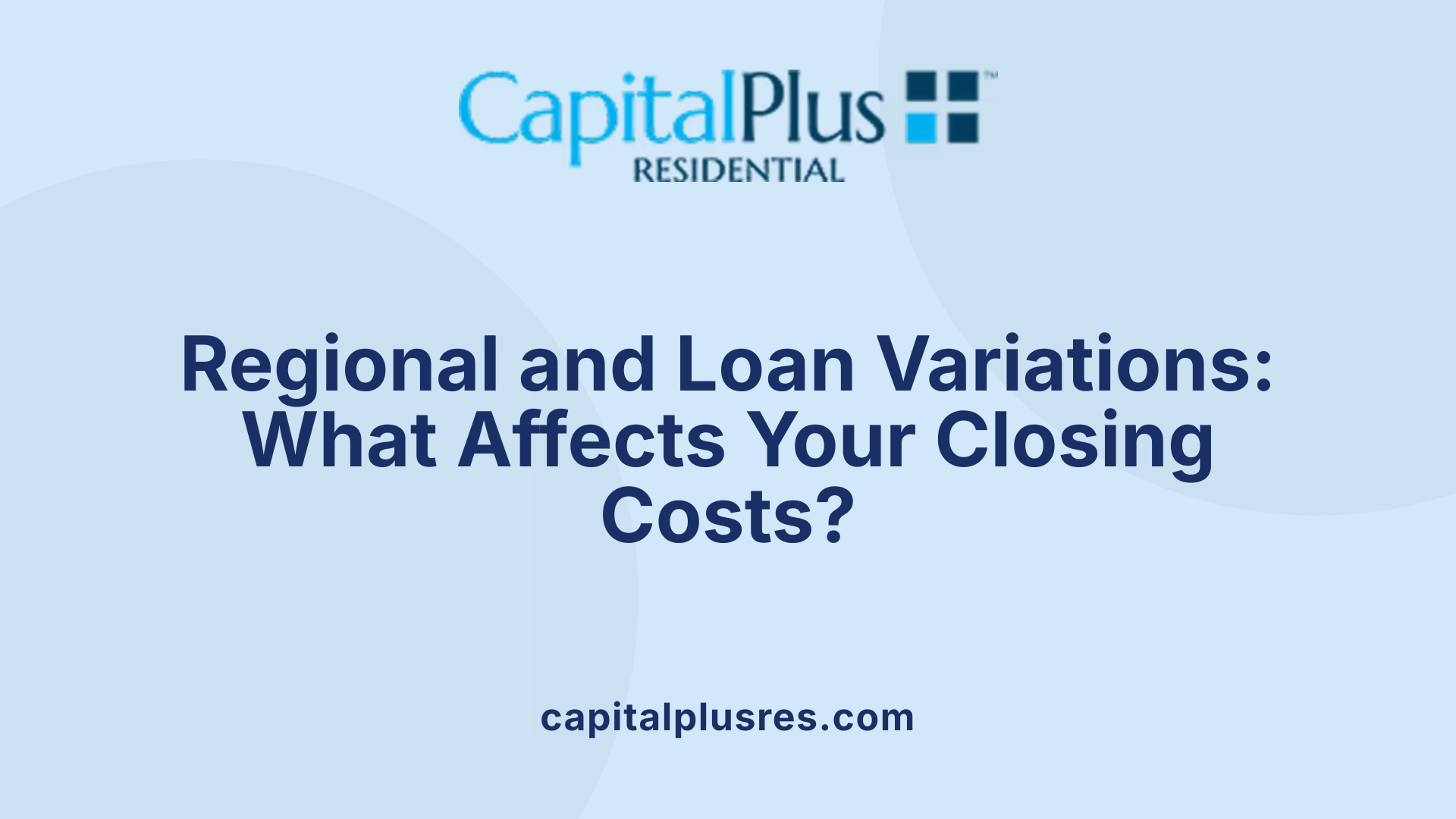
How do closing costs vary by location and loan type?
Closing costs are not uniform across the United States; they vary greatly depending on location, type of loan, and whether the transaction is a purchase or refinance. Regions such as Washington, D.C., New York, and Delaware tend to have higher average closing costs, frequently exceeding $12,000 due to factors like local taxes and fees. In contrast, states like Missouri, Iowa, and South Dakota often see closing costs under $2,000, reflecting lower taxes and less expensive real estate market services.
Impact of home price and transaction type
The total home price also influences closing costs, which are generally calculated as a percentage of the loan amount—typically ranging from 2% to 5%. The nature of the transaction plays a role as well: refinancing a home typically incurs lower average closing costs (around $2,403) compared to purchasing a property, where costs average approximately $4,661 nationally. This difference is due to the additional services and fees involved in property purchases, such as title search and insurance.
Closing costs across loan categories
Loan type considerably affects the closing cost breakdown:
- Conventional loans often include application fees, loan origination fees, and discount points.
- FHA loans include mandatory upfront mortgage insurance premiums and may involve additional fees like appraisal, credit checks, and title insurance.
- VA loans incorporate a funding fee unique to this category, which varies based on service and loan details.
- Jumbo loans usually carry higher closing costs due to their larger loan amounts and the risk profile.
Each loan type has specific limitations and allowances on seller concessions and costs assigned to the borrower.
These regional and loan-type variations are crucial for buyers and refinancers to understand, as they directly impact the total amount needed to complete the home financing process. By considering their location and loan specifics, borrowers can better anticipate their closing costs and plan accordingly.
The Mortgage Closing Process: Timing and Disclosure of Costs
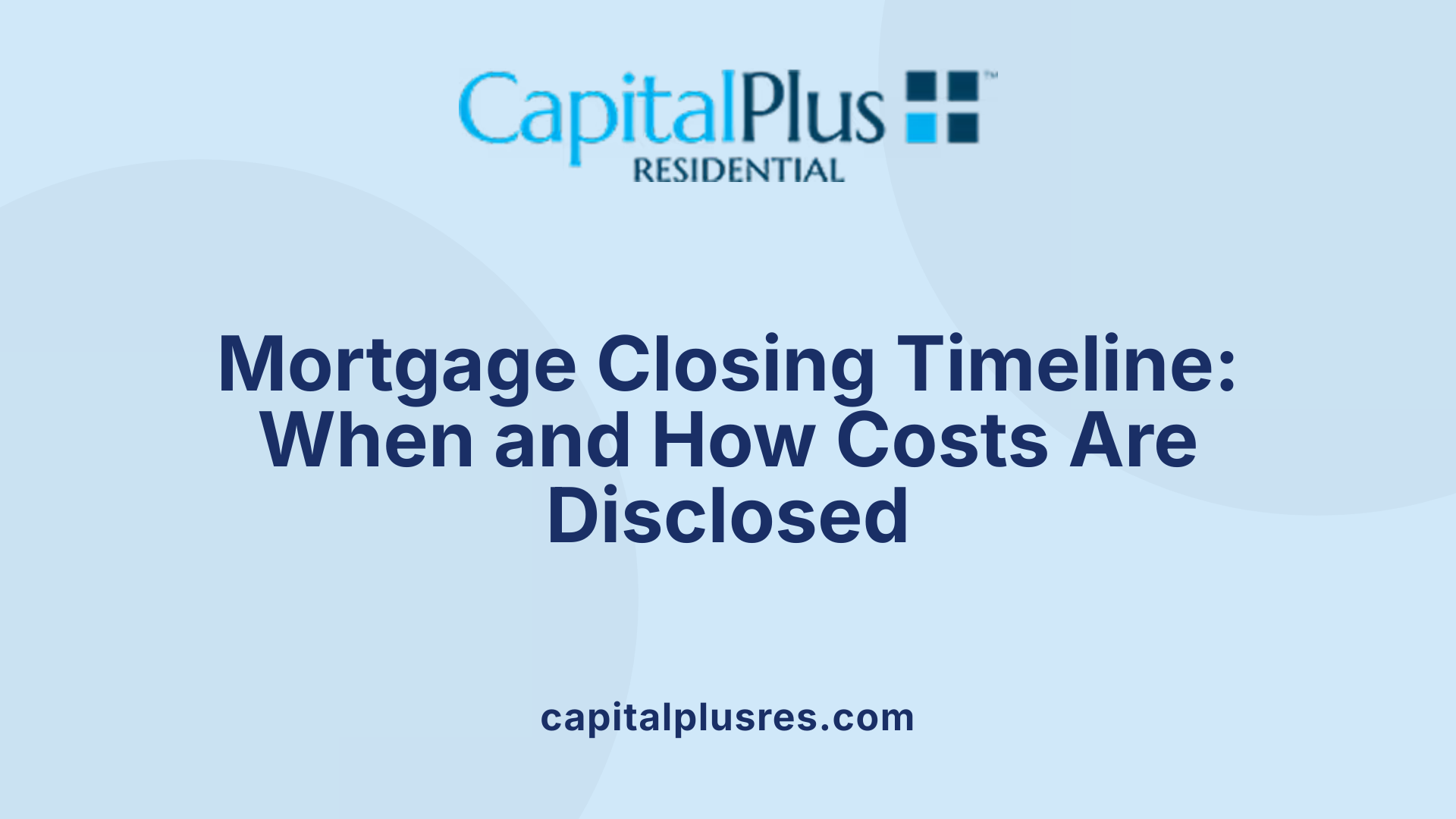
When and How Are Closing Costs Disclosed to Borrowers?
Lenders provide a Loan Estimate within three days of receiving a mortgage application. This document outlines the expected closing costs, giving buyers an early idea of what to expect financially.
What Is the Importance of the Closing Disclosure?
At least three days before the closing meeting, borrowers receive the Closing Disclosure. This critical document details the final closing costs, ensuring transparency and allowing buyers to make informed decisions.
How Should Buyers Review Their Costs Before Closing?
It is essential for buyers to carefully review both the Loan Estimate and the Closing Disclosure to understand all charges. Questions about discrepancies should be addressed promptly with the lender or closing agent.
What Happens on Closing Day?
On the day of closing, typically 30 to 45 days after the mortgage application, buyers pay the closing costs along with the down payment. Buyers should bring a certified check for the estimated amount and a photo ID. Final documents are signed to complete the mortgage transaction.
Strategies to Reduce and Manage Closing Costs
How can buyers reduce their closing costs?
Buyers have several actionable options to lower their closing costs effectively. One primary strategy is shopping around for service providers like appraisers, title insurance companies, and inspectors. Since third-party fees can vary significantly, comparing offers can lead to substantial savings.
Negotiating seller concessions is another valuable approach. Buyers can ask sellers to cover certain closing expenses, with allowed concession amounts varying by loan type. This negotiation can reduce the out-of-pocket expenses required at closing.
Applying for down payment assistance programs also helps ease upfront costs by providing grants or loans that can offset part of the buyer's cash requirements, including closing fees.
Selecting the timing of the closing can influence prepaid interest costs. Closing near the end of the month minimizes the amount of interest prepaid at closing, directly lowering expenses.
Thoroughly verifying all closing charges is essential. Buyers should carefully review the Loan Estimate and the Closing Disclosure documents to spot errors or unnecessary fees that can sometimes be contested or removed.
Some lenders advertise no-closing-cost loans, which roll closing fees into the mortgage balance or compensate with higher interest rates. While this removes upfront payments, it can increase overall loan cost due to extra interest over time.
Employing these strategies—shopping for service providers, negotiating concessions, leveraging assistance programs, savvy timing, and reviewing costs—can make closing costs more manageable and protect buyers from unexpected expenses.
Financing Closing Costs: Pros and Cons of Rolling Costs Into the Loan
Can closing costs be financed as part of the mortgage?
Yes, some closing costs can be included in the mortgage loan amount, a process known as "rolling" closing costs into the loan. This option increases the total loan balance, allowing borrowers to avoid an upfront lump-sum payment.
Impact on overall interest paid
While rolling closing costs into the mortgage reduces the immediate cash needed at closing, it increases the principal amount borrowed. Over time, this causes borrowers to pay more interest because the loan balance is higher. Consequently, the total amount paid over the life of the loan rises, making this a less cost-effective option in the long run.
Comparison with paying upfront fees
Paying closing costs upfront requires a larger initial payment during closing but generally reduces the total interest paid throughout the loan term. This approach is often more economical, saving money over years despite the bigger initial outlay.
Additional considerations
Many lenders advertise "no-closing-cost" loans, which usually mean these costs are simply incorporated into the loan principal and paid over time via interest, rather than eliminated. Borrowers should weigh immediate cash flow needs against long-term costs when deciding how to handle closing expenses.
By understanding the trade-offs between rolling closing costs into the loan versus paying upfront, buyers can make more informed decisions tailored to their financial situation.
The Complete Cost Picture: Beyond Closing Costs to Monthly Mortgage Expenses
How do closing costs relate to monthly mortgage payments?
Closing costs are one-time fees paid when the property transaction closes, generally ranging from 2% to 6% of the loan amount. These include charges like appraisal fees, lender origination, title insurance, and various government taxes. Unlike closing costs, monthly mortgage payments are ongoing and cover principal and interest on the loan.
What are the components of a monthly mortgage payment?
Monthly mortgage expenses typically consist of several parts:
- Principal and Interest: The core loan repayment plus interest charged by the lender.
- Property Taxes: Usually paid via escrow account and vary by property location.
- Homeowners Insurance: Protects the property against hazards.
- Mortgage Insurance: Required if the down payment is less than 20%, covering lender risk.
These components combine to create the total monthly payment homeowners must budget for.
How do closing costs fit into overall homeownership affordability?
Closing costs are an upfront financial responsibility distinct from monthly payments, but both affect affordability. While closing costs require a lump sum at closing, monthly payments affect long-term budgets. Prospective buyers should assess closing costs alongside expected monthly expenses to fully understand the financial commitment of homeownership. Careful review of loan estimates and closing disclosures helps buyers plan effectively for both.
Understanding the distinctions and relationships between these costs can prevent surprises and aid in making fully informed homebuying decisions.
Final Thoughts on Mortgage Closing Costs
Navigating mortgage closing costs can seem complex, but understanding their makeup, timing, and payment responsibilities empowers buyers to plan effectively and negotiate wisely. Armed with transparent disclosures and various strategies, prospective homeowners can reduce surprises at closing and position themselves for a financially sound home investment.
References
- Closing Costs: What Are They And How Much Are They?
- Closing costs: What are they, and how much will you pay?
- What costs come with taking out a mortgage?
- Closing Costs Explained
- Mortgage Closing Costs: A Guide for Homebuyers
- A Study of Closing Costs for FHA Mortgages
- What Closing Costs Are Required?
- Mortgage Closing Costs: What and How Much Are They?
- Closing Costs: How Much Should I Expect to Pay?
Latest Blog


Get Pre-Approved Today
Start your secure online application now so you can get pre-approved for a mortgage (and close on your dream home) quickly within 5 minutes.

